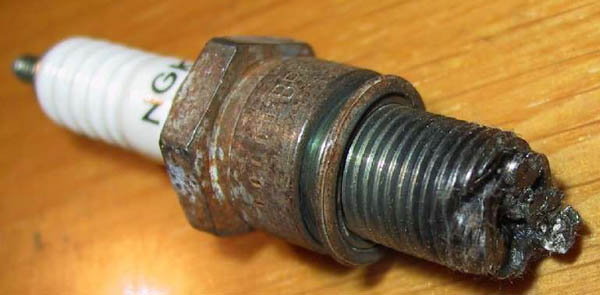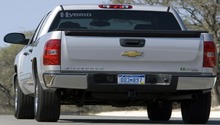Chevrolet Silverado: Used Truck Buyer's Guide
Here you will find the ultimate car buying guide. Read more to learn if the Chevy Silverado is right for you.
This article applies to the Chevy Silverado GMT800, GMT900, and K2KK (1999-Present).
The Chevrolet Silverado 1500 is one of the best-selling trucks on the market. And due to a long lifespan, this relatively reliable vehicle is also one of the most popular used vehicles on the market. However, before purchasing a Silverado, take a look under the hood and run the VIN to ensure the vehicle has been properly maintained. Here's what you can expect (the good and the not-so-good) from this best-selling truck!
Vehicle Breakdown
Gas Mileage
When purchasing a used Chevy Silverado 1500, expect to achieve good gas mileage (for truck standards) on trucks that have been properly maintained. According to the manufacturer, the Siverado gets 17 miles per gallon in the city and up to 22 on the highway. However, hauling heavy loads will obviously reduce your fuel economy.

General Lifespan
Most owners and experts agree you can generally get about 300,000(+) miles out of a new or used Silverado 1500. However, the vehicle should be properly maintained to achieve the longest life.

Used Truck Buying Tips
Buyers have had positive experiences when purchasing a used Silverado 1500 from a private owner or dealership. Here are the recommendations for making the used truck buying experience easier:
- Run the vehicle's service history.
- Have the vehicle inspected.
- Ask if the vehicle has done a lot of towing in the past, and across what distances.
- Read Chevrolet forums detailing possible problems.
- Inquire about current and past recalls, as well as Technical Service Bulletins for the Silverado 1500.
- Familiarize yourself with the Silverado 1500's maintenance schedule.

Scheduled Maintenance
Follow your general maintenance schedule to keep repair costs to a minimum, and extend the life of your used Silverado 1500 truck. In addition to regular professional inspections of your truck's major systems, top off all fluids, including your coolant fluid, brake fluid, and transmission fluid. Replace your truck's various filters, regularly. Tire rotation is important and should be done every 3,000 miles. Doing so will improve your fuel economy, and keep the tire pressure warning light from illuminating on the dash. Keep in mind, a number of Technical Service Bulletins have been issued for the Silverado 1500, so you'll want to work closely with your mechanic to diagnose and repair any faulty components that are announced.

Common Questions
What Are the Weak Points of the Silverado 1500?
The Chevy V8 engines are generally considered pretty much bulletproof in terms of the mechanics; however, it is not uncommon for these trucks to burn about 1-quart of oil during the 7,000-mile oil change interval. As the truck ages past 100,000 miles, much like any vehicle, try shortening the service intervals to 5,000 miles to keep the engine happy.
One regular complaint with the 2007 to 2013 Silverado is the interior electrics are finicky. Some users have also complained of an unresolved drive-line vibration at speed. However, these are small issues compared to the vast number of trucks sold without issues.
How Many Recalls Have Been Issued For the Silverado 1500?
As of May 2015, General Motors has issued a number of recalls for certain models of the Silverado 1500, including two defects that might cause the vehicle to spontaneously roll away, as well as a faulty instrument panel and defective speedometer. Run the vehicle's VIN to ensure all service work has been performed on time, and in accordance with the maintenance schedule.
Common Issues
Spark Plug Replacement
This is not a particularly expensive repair. You might need to change your spark plugs and wires after 100,000+ miles. This sounds quite obviously, but some people lack mechanical sympathy. If you run your plugs beyond their intended service life, you could have the plugs deteriorate and stop sparking all together. And if they corrode, they are literally disintegrating into the cylinder, which can wear out the cylinder walls.
Signs and symptoms of faulty spark plus as well as wires include, but are not limited to:
- Rough engine idle
- Misfires
- Engine hesitation and/or surging
- Loss of engine power
This is a simple DIY repair that should only cost you $50 for parts and $30 for tools. Pop the hood of your truck to check the spark plugs and wires for cracks, breaks, or other damages that could interrupt the power from your truck's battery to the spark plugs.

Transmission Replacement
Transmission problems might affect your truck if you don't change your transmission fluid and filter every 50,000 miles.
Signs to look out for include, but are not limited to:
- Leaky or foul smelling transmission fluid
- Sticky gears, including slipping
- Noises
- Vehicle goes "bump" in neutral
- Clutch drags
- Check engine light illuminates on the dashboard
Unless your a professional mechanic, it is recommended leaving all transmission repairs to the professionals.

Technical Service Bulletins (TSB)
This data can also be found on the NHTSA's website.
- 09/01/2014 - Service Brakes, Master Cylinder
- 09/01/2014 - Faulty Hose, Lies/Piping, Fittings
- 05/01/2008 - Suspension Vibration
- 02/01/2008 - Faulty Rear Suspension
- 02/01/2007 - Defective Steering Shaft: Clunking noises in steering wheel
- 01/01/2007 - Tire and Wheel Size Inspection
- 12/01/2006 - Rear Drive Axle Whine Noise
- 09/23/2006 - Faulty Left Front Axle Shaft
- 03/01/2006 - Upper Arm Control Replacement
Related Discussions
- Best Year Silverado to Buy - ChevroletForum.com
- Used Truck Buyer, What to Look For - ChevroletForum.com
- Buy or not Buy - ChevroletForum.com






